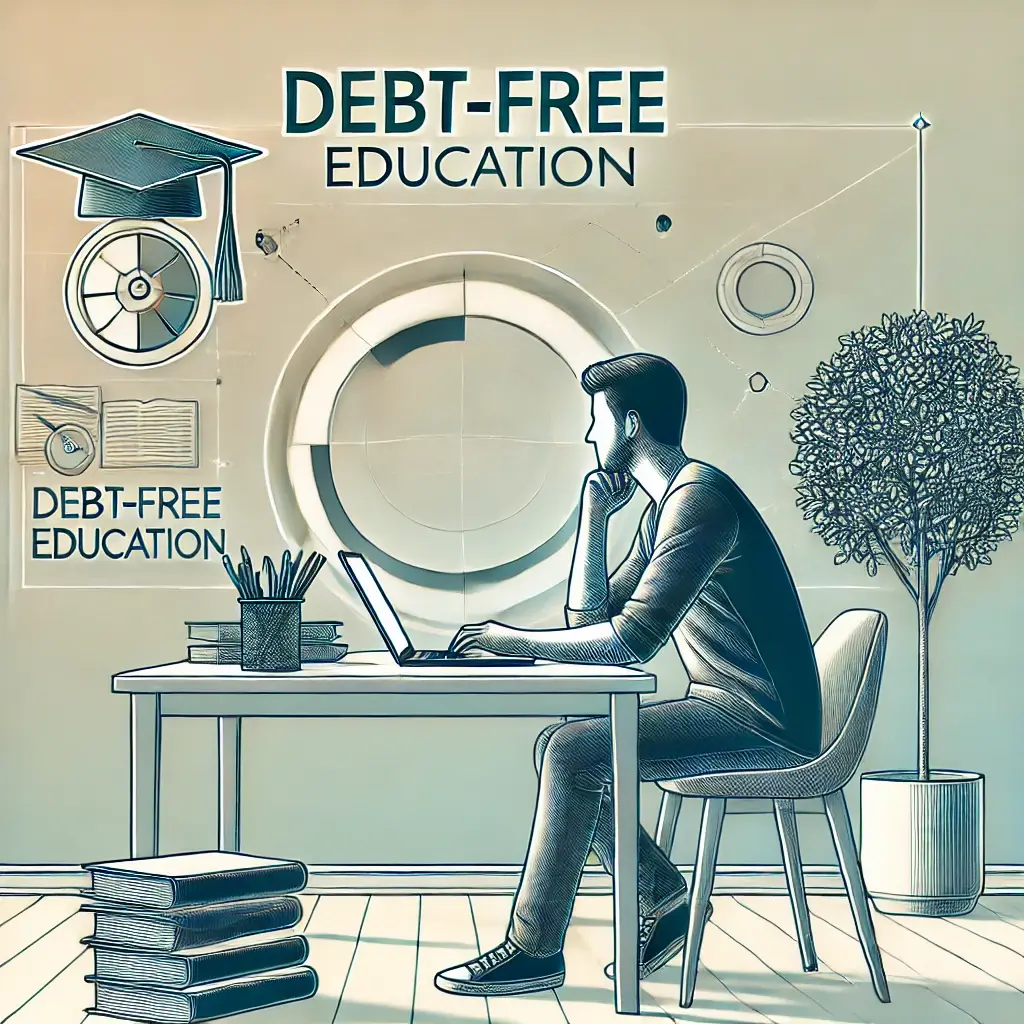The rising cost of education has left countless students burdened with debt. However, achieving a debt-free education is possible with the right strategies. From scholarships and work-study programs to online degrees and vocational training, many paths can lead you to a fulfilling career without the heavy financial burden. In this guide, we explore innovative, cost-effective education options that can help you earn a degree or certification without going into debt.
1. Pursue Scholarships and Grants
Scholarships and grants are the most effective way to pay for college without loans. Unlike loans, scholarships and grants do not need to be repaid. Here are some ways to maximize these opportunities:
Apply for Diverse Scholarships
Many scholarships are available based on academics, athletic achievements, community service, and more. Start by researching scholarships from your intended college, local organizations, and online scholarship databases like Fastweb and Scholarships.com.
Seek Out Grants for Financial Need
Federal and state grants, such as the Pell Grant, offer substantial aid for students with demonstrated financial need. Completing the FAFSA (Free Application for Federal Student Aid) is the first step to qualify.
Explore Field-Specific Scholarships
Certain fields, especially in STEM, healthcare, and teaching, often have targeted scholarships. Organizations related to these fields frequently offer financial support to students committed to these high-demand careers.
2. Enroll in Work-Study Programs
Federal work-study programs allow students to work part-time on campus while studying. This approach not only provides a steady income but also helps you gain valuable work experience related to your field.
Benefits of Work-Study Programs
Work-study positions are typically on-campus and offer flexible hours that accommodate your class schedule. Many schools also provide positions related to your major, allowing you to build a resume while earning money.
Alternative Work-Study Options
If your school doesn’t offer work-study, consider alternative options, such as internships or part-time jobs off-campus that align with your career goals.
3. Consider Community College to University Pathways
Starting at a community college and transferring to a four-year institution is a cost-effective path to a bachelor’s degree. Community colleges often have lower tuition rates, and many have transfer agreements with universities.
Benefits of the Community College Route
Community college tuition is generally more affordable, allowing you to complete your general education courses at a fraction of the cost. Once you’re ready, transfer to a university to complete your degree and pay only for two years of university tuition.
Choosing the Right Transfer Program
Research transfer agreements between community colleges and universities. Many community colleges offer “2+2” programs, which outline a seamless transition to a four-year school after two years of study.
4. Leverage Vocational Training and Apprenticeships
Vocational training and apprenticeships provide specialized, hands-on education in fields like healthcare, IT, and skilled trades. These programs are shorter and often more affordable than traditional degrees, leading to high-demand, well-paying jobs.

Benefits of Vocational Training
Vocational schools focus on practical skills needed for specific careers, often offering certificates or diplomas in less time than a traditional degree. This route is ideal for those seeking a direct path to a career without the added expense of a four-year degree.
Explore Apprenticeship Opportunities
Apprenticeships, especially in trades like electrical work, plumbing, and IT, allow you to earn a salary while learning. They often cover tuition and fees for related training, offering an effective way to gain skills without debt.
5. Online Degrees: Affordable and Flexible
Online degrees have become increasingly credible, offering a flexible, affordable alternative to traditional education. Many accredited institutions now provide online programs, allowing students to study from anywhere while potentially saving on tuition and living expenses.
Why Online Education is Cost-Effective
Online programs often have lower tuition fees, and students can save on expenses such as housing and commuting. They also offer flexibility, which can be ideal for those balancing work and study.
Choosing the Right Online Program
Ensure that any online program you consider is accredited and aligns with your career goals. Research reviews and outcomes from graduates to confirm that the program offers value.
6. Explore Self-Paced and Competency-Based Programs
Self-paced and competency-based programs allow students to complete courses based on their knowledge and skills rather than a fixed semester schedule. This approach can lead to faster degree completion and lower costs.
How Competency-Based Programs Work
In competency-based education, students progress by demonstrating mastery of the material. This format is ideal for students with prior knowledge or experience in a field, allowing them to move quickly through familiar subjects.
Popular Institutions Offering Competency-Based Education
Some institutions, like Western Governors University (WGU) and Southern New Hampshire University (SNHU), offer accredited competency-based programs, providing an affordable option for students aiming to complete degrees quickly.
7. Find Employer-Sponsored Education Programs
Many companies now offer education assistance programs, helping employees earn degrees or certifications. Programs like these can be a great option for those who want to continue their education while gaining work experience.
Benefits of Employer-Sponsored Education
Employer-sponsored programs allow you to work and study simultaneously, often covering tuition costs partially or fully. Fields like technology, healthcare, and business frequently offer these programs, making it a viable path for professionals looking to advance without debt.
Examples of Companies Offering Education Assistance
Companies like Amazon, Starbucks, and Walmart provide education benefits for employees, offering a debt-free path for those willing to balance work and study.
Conclusion
Achieving a debt-free education is possible with careful planning and a willingness to explore innovative paths. From scholarships and work-study programs to community colleges and online degrees, there are numerous ways to minimize or eliminate debt. Start by researching which options align with your career goals, and take advantage of the resources available to support your journey to a financially secure future.
